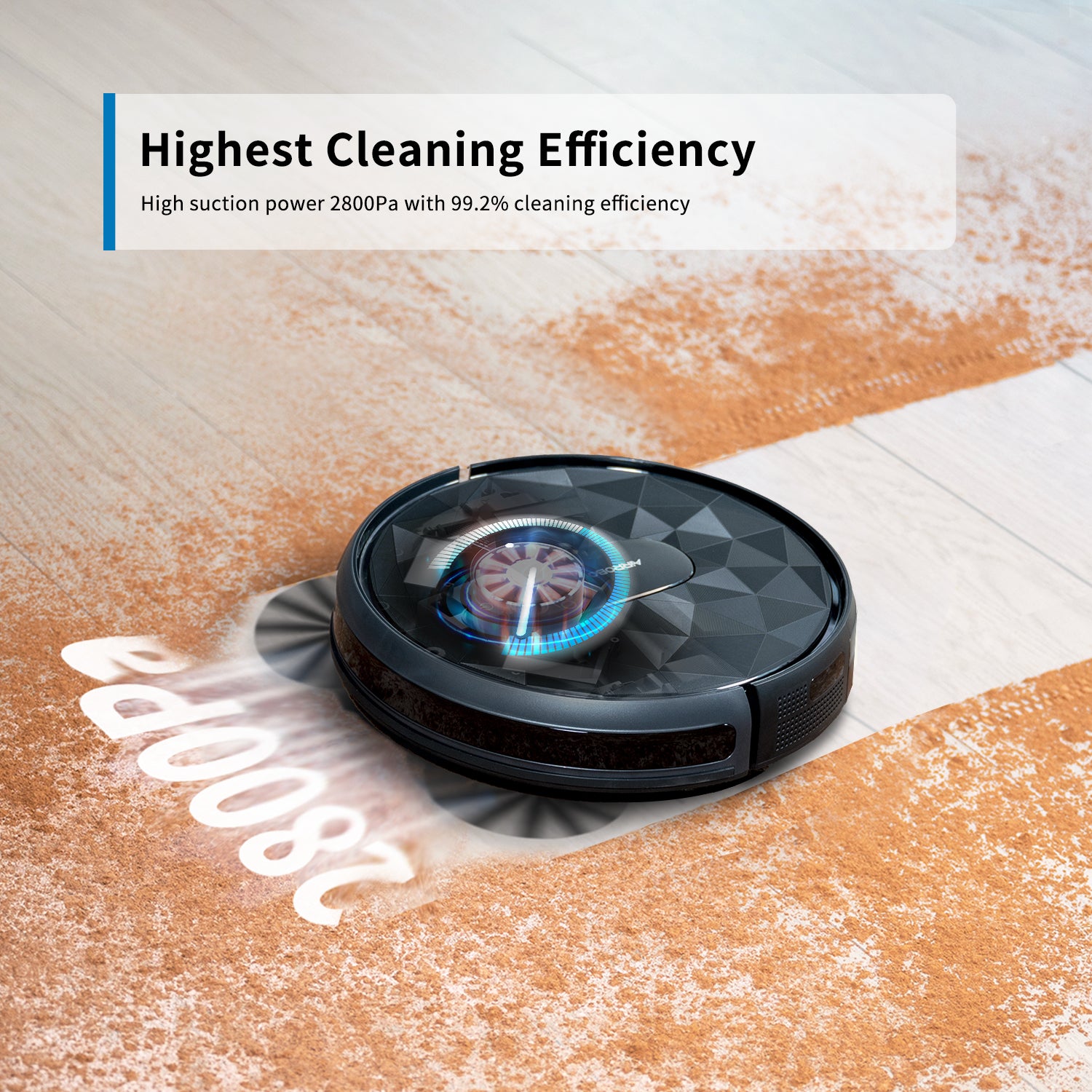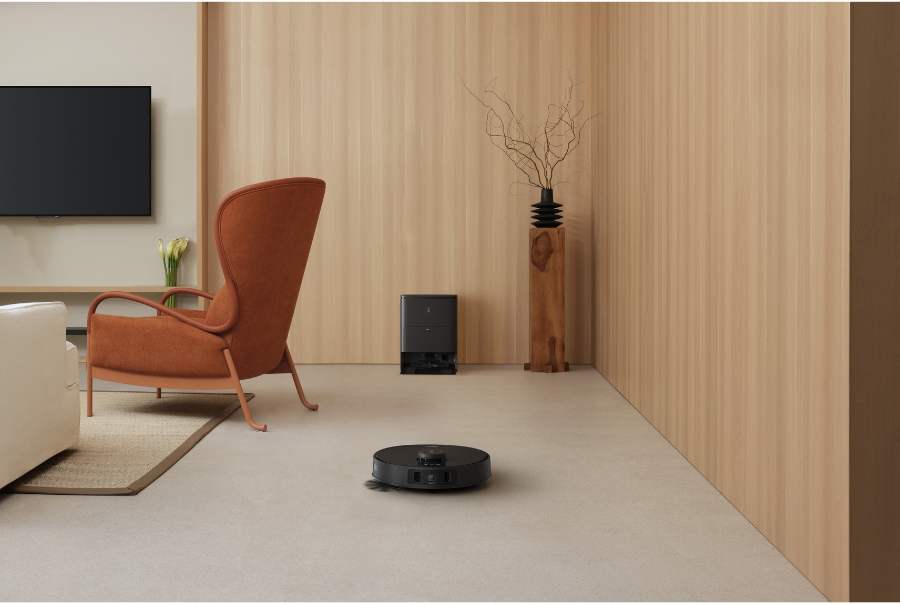A good suction power for a robot vacuum cleaner ranges from 1500 to 3000 Pa (Pascal). This level ensures efficient cleaning on various surfaces.
Choosing the right robot vacuum can significantly enhance your home cleaning routine. Suction power plays a crucial role in a vacuum’s effectiveness. Higher suction power means better dirt and debris removal, especially on carpets and rugs. Modern robot vacuums feature various suction settings, allowing users to adjust power based on cleaning needs.
Consider factors like floor type and pet hair presence when selecting a model. Understanding suction power helps you make an informed decision, leading to a cleaner, healthier living environment. Invest time in researching options to find the best fit for your home.
Page Contents
- 1 The Importance Of Suction Power In Robot Vacuums
- 2 Measuring Suction Power: Units And Standards
- 3 Optimal Suction Power For Various Floor Types
- 4 Balancing Suction Power And Battery Life
- 5 Robot Vacuums: Navigating Obstacles And Suction
- 6 Noise Levels In Relation To Suction Power
- 7 Suction Power Versus Other Cleaning Features
- 8 Maintaining Optimal Suction: Tips And Tricks
- 9 Future Trends In Suction Technology For Robot Vacuums
- 10 Frequently Asked Questions
- 11 Conclusion
The Importance Of Suction Power In Robot Vacuums
The suction power of a robot vacuum is crucial for its cleaning efficiency. Higher suction power means better dirt and dust removal. It helps clean different surfaces like carpets and hard floors effectively.
Several factors influence suction power. These include motor strength, brush design, and filter type. A strong motor boosts suction, while a well-designed brush picks up more debris. Filters trap fine particles and keep the air clean.
Robot vacuums with higher suction power perform better on varied surfaces. They can tackle stubborn dirt and pet hair more easily. A good balance of suction power and battery life is essential for maximum performance.
Measuring Suction Power: Units And Standards
Suction power is crucial for robot vacuum cleaners. It determines how well they clean. Two common units measure suction power: Air Watts (AW) and Pascals (Pa).
Air Watts measure the actual cleaning ability. Higher AW means better performance. Pascals indicate the pressure of the airflow. More Pa means stronger suction force.
Different brands often use these metrics differently. It’s important to compare the same unit. For a clearer understanding, here’s a simple comparison:
| Brand | Air Watts (AW) | Pascals (Pa) |
|---|---|---|
| Brand A | 150 | 2000 |
| Brand B | 120 | 1800 |
| Brand C | 100 | 1500 |
Optimal Suction Power For Various Floor Types
For hardwood and tile surfaces, a suction power of 1500 to 2000 Pa is ideal. This range effectively picks up dirt and debris without damaging the floors. Robot vacuums with this power can easily navigate these surfaces.
For carpets and rugs, a higher suction power is necessary. Aim for 2000 to 3000 Pa for effective cleaning. This strength helps in removing embedded dirt and pet hair. Some models even have special modes for carpets.

Credit: us.air-robo.com
Balancing Suction Power And Battery Life
Finding the right suction power is crucial for robot vacuum cleaners. It affects both cleaning efficiency and battery life. Higher suction power often leads to quicker dirt removal. However, it can drain the battery faster.
Operational time is directly linked to suction settings. Lower settings can extend battery life, allowing for longer cleaning sessions. Users must find a balance between suction strength and run time. This ensures the vacuum can clean effectively without frequent charging.
Recent advancements in battery technology have improved robot vacuums. New batteries offer longer life and faster charging. This allows for more powerful suction without sacrificing operational time. Choosing a model with updated battery tech can enhance cleaning performance.
Suction power is crucial for robot vacuums. It directly affects how well they pick up dirt and debris. A strong suction helps them navigate obstacles effectively.
Obstacle detection relies on good suction. When the vacuum has strong power, it can better sense and avoid items in its path. This helps prevent tangling and damage.
Many modern vacuums use adaptive suction technology. This feature adjusts the suction based on floor type. It provides better cleaning on carpets and hard floors.
| Floor Type | Suction Power Needed |
|---|---|
| Hard Floors | Low to Medium |
| Carpets | Medium to High |
Noise Levels In Relation To Suction Power
Finding the right suction power is crucial for robot vacuum cleaners. A balance between power and quietness is essential. High suction can mean more noise, which might be bothersome.
Some models offer noise reduction technologies. These help minimize sound without sacrificing suction. Look for features like brushless motors or silent modes. These innovations make cleaning less disruptive.
Choosing a robot vacuum with adjustable settings can be beneficial. You can increase suction when needed and lower it for quieter operation. This flexibility ensures a more pleasant cleaning experience.
Suction Power Versus Other Cleaning Features
Suction power plays a key role in a robot vacuum’s performance. It works best with effective brushes and high-quality filters. Brushes help lift dirt and debris from carpets and hard floors. Filters trap allergens and dust particles, improving air quality.
Smart features can greatly enhance cleaning. Mapping technology helps the robot navigate efficiently. Scheduling options allow cleaning at convenient times. Obstacle detection prevents collisions with furniture. These features work together to provide a thorough clean.
Maintaining Optimal Suction: Tips And Tricks
Regular maintenance is key for a robot vacuum cleaner. Clean the brushes and filters often. This helps keep suction strong. Check for clogs in the hose or dustbin. Clear any debris that blocks airflow.
Common suction issues may arise from dirty components. Inspect the wheels for hair or dirt buildup. Ensure the vacuum is on a flat surface for best performance. Adjust settings based on floor type for better results.
Use the manufacturer’s guide for specific cleaning tips. Replace parts as needed to maintain suction power. Regular checks will help your robot vacuum last longer.
Future Trends In Suction Technology For Robot Vacuums
Suction technology is evolving quickly in the world of robot vacuums. New designs focus on stronger suction power while remaining energy-efficient. Innovations such as smart sensors help vacuums adjust suction based on floor type. This allows them to clean carpets and hard floors effectively.
Upcoming advancements may include self-adjusting brushes. These brushes can change based on dirt level. Users may also see app-controlled suction settings. This feature allows for personalized cleaning preferences.
Finally, advanced filtration systems are on the horizon. These systems will improve air quality by trapping more allergens and dust. The future looks bright for robot vacuum technology!

Credit: blog.switch-bot.com

Credit: robotmylife.com.au
Frequently Asked Questions
What Suction Power Is Ideal For Robot Vacuums?
A good suction power for robot vacuums typically ranges from 1500 to 3000 Pa. This range provides effective cleaning on various surfaces. Higher suction power is beneficial for homes with pets or carpets. It ensures thorough dirt removal and enhances overall cleaning efficiency.
How Does Suction Power Affect Cleaning Performance?
Suction power directly influences a robot vacuum’s cleaning ability. Higher suction helps pick up more dirt and debris. It is especially important for carpets and textured surfaces. Lower suction may suffice for hardwood floors but may leave dirt behind. Therefore, choose according to your home’s needs.
Is Higher Suction Power Always Better?
Not necessarily. While higher suction power improves cleaning, it may lead to increased noise levels. It can also drain battery life faster. Finding a balance between suction power and efficiency is crucial. Consider your specific cleaning requirements before making a choice.
Can I Adjust The Suction Power On My Robot Vacuum?
Many modern robot vacuums offer adjustable suction settings. This feature allows users to customize cleaning based on the surface. For example, use higher suction on carpets and lower on hardwood floors. Adjusting suction can enhance performance while conserving battery life.
Conclusion
Choosing the right suction power for a robot vacuum cleaner is essential for effective cleaning. Higher suction can tackle dirt and pet hair more efficiently. Consider your home’s flooring and specific needs. A balance between suction power and battery life will enhance your cleaning experience.
Invest wisely for a cleaner home.

